#Anglia Components
Explore tagged Tumblr posts
Text
#Anglia Components#Lorlin#automotive#Electronics#SwitchTechnology#Manufacturing#Distribution#electronicsnews#technologynews
0 notes
Text
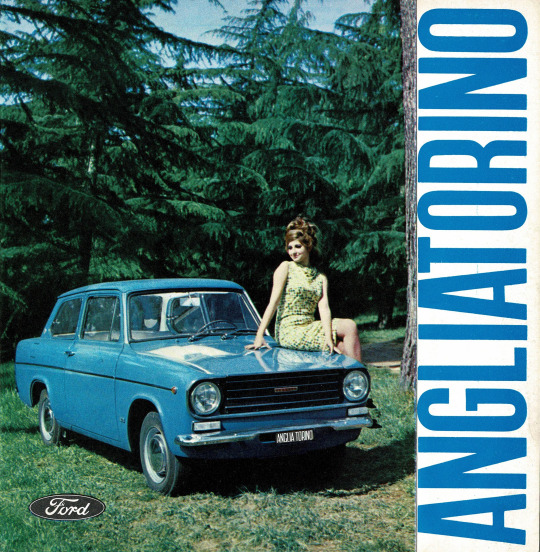
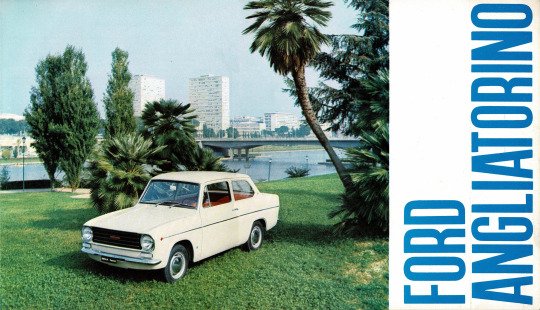



Ford Anglia Torino brochure (Dutch market), 1965. Developed by the Italian subsidiary of Ford, using the chassis and mechanical components from the British Ford Anglia 105E Saloon, with bodywork designed by Giovanni Michelotti and built in Turin by Officine Stampaggi Industriali (OSI). In addition to Italy it was marketed in marketed in Belgium, the Netherlands, and Luxembourg with 10,007 units sold before it was discontinued in 1967.
#Ford#Ford Anglia#Ford Anglia Torino#Ford Anglia 105E#Giovanni Michelotti#Michelotti#Officine Stampaggi Industriali#OSI#coachbuilt#special editon#3 box
111 notes
·
View notes
Text
Being a Folklore Dog
I’ve been meaning to write about my nonhumanity for a while now so hi, I’m dogbeast~! I’m a human-ish weredog shapeshifting fae dog monster ;-)
My system’s best guess right now is that I’m a fusion of two previous alters, but I would’ve fused before we realised we were a system so we don’t really remember how that process went down. I’m fairly sure I’m a fusion of a human lad and a black monster dog which is why I’m both human and a dog cryptid~ ♡
I’m specifically a black monster dog from British folklore like a barghest, shuck, gytrash or padfoot (I’m not a church grim even though they can appear as black dogs, that’s a slightly different kind of beast to me 😌). I have more of a connection to the area of the UK we grew up in than a lot of my other headmates and being a British folklore dog is really important to me and my connection to my home. I’m a pretty sociable and chill guy but I’m also super queer and it’s hard sometimes to grow up in a conservative rural area and feel like an outcast in a place that means so much to you. Black shuck is a monster but it’s a monster that belongs in East Anglia. I’m a medieval european historian too and it feels so right that I have this connection to the history of my home. I’m an old monster and I’ve always been here and always will be here.
✨Dehumanisation✨ reasons aside though being a black dog doesn’t feel like a negative thing for me at all. I’m a lot more stable and happier as a fused alter than either of my component parts were and I love being a big scary monster weredog~ Black dogs are also considered ghost dogs and fairy dogs and I think I can definitely see myself as a fae human weredog thing 👀
Literally in the middle of writing this lol I remembered that @who-is-page coined the word folcintera and I think that might fit what I am - a weredog who’s nonhumanity is intrinsically tied to British folklore 😌 Theriomythic works for me too I think! Honestly I haven’t existed in my current form for more than a few months so I’m still figuring out the details of what exactly I am haha but folcintera and theriomythic feel right for now

#I hope u don’t mind the tag page I saw that u wanted to be tagged in personal folcintera stuff when I was searching the term 😌💞#alterhuman#dog therian#therian#otherkin#theriomythic#folcintera#dogbeastposting
36 notes
·
View notes
Text
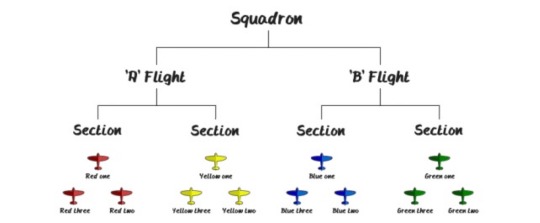
Royal Air Force Tactics During the Battle of Britain | Classic Warbirds
During the years preceding the Second World War (1939 - 1945), the prevalent idea that affected military thinking was, as Stanley Baldwin, leader of the Conservatives, stated in a speech in the House of Commons on the 10th November 1932 that “the bomber will always get through”, as it was envisioned that in a future war the enemy would deliver a knockout blow from the air. Limiting the damage enemy aircraft could do would be the responsibility of the Air Defence of Great Britain, which was established on the 1st January 1925, and was the component of the Royal Air Force tasked with defending the UK's airspace.
As the RAF expanded during the 1930s, on the 13th July 1936 the Air Defence of Great Britain was disbanded and replaced on the 14th July 1936 by three new commands, Bomber, Coastal and Fighter alongside Training Command, formed on the 1st May 1936. Fighter Command, with Air Chief Marshal Hugh Dowding as its Commander-in-Chief, was now responsible for the defence of the UK's airspace.
The tactics developed by Fighter Command, as part of its Air Fighting Manual, called for tight formations of three aircraft in a Vic formation to perform Fighter Area Attacks, of which there were six different scenarios to attack enemy aircraft, depending on the amount and type of aircraft intercepted. Once they spotted the hostile aircraft the squadron would position themselves according to the Fighter Area Attack chosen. However, this was based on the premise that attacking bombers would fly from airfields in Germany without effective fighter cover, which wouldn't be the case in the summer of 1940, as the Luftwaffe could operate from airfields in France.
Fighter Command Structure
When the battle began on the 10th July 1940, Fighter Command, whose headquarters were at Bentley Priory, was still commanded by Air Chief Marshal Hugh Dowding and was structured as follows:
No. 10 Group
Commanded by Air Vice-Marshal Sir C J Quintin Brand
Headquarters: RAF Box
Covering: South West England and South West Wales No. 11 Group
Commanded by Air Vice-Marshal Keith Park
Headquarters: RAF Uxbridge
Covering: South East England and London
No. 12 Group
Commanded by Air Vice-Marshal Trafford Leigh-Mallory
Headquarters: RAF Watnall
Covering: East Anglia, Midlands, Mid and North Wales No. 13 Group
Commanded by Air Vice-Marshal Richard Saul
Headquarters: RAF Newcastle
Covering: North England and Scotland
No. 14 Group
Commanded by Group Captain Philip F. Fullard (1)
Headquarters: Drumossie Hotel, Inverness
Covering: Scotland No. 9 Group (2)
Commanded by Air Vice-Marshal Wilfred McClaughry
Headquarters: RAF Barton Hall
Covering: Northern Ireland and North West England
1. Replaced by Air Vice-Marshal Malcolm Henderson on the 20th July 1940.
2. Formed on the 16th September 1940.
Aircraft Strength - 10th July 1940
Fighter Command had 656 fighters available, consisting of 29 Hawker Hurricane, 19 Supermarine Spitfire, 6 Bristol Blenheim and 2 Boulton Paul Defiant squadrons. It could also call on Nos. 804 and 808 Naval Air Squadrons, the former equipped with Gloster Sea Gladiators and the latter Fairey Fulmars, who were on loan from the Fleet Air Arm.
View the order of battle for Fighter Command on the 10th July 1940
The Luftwaffe could call on over 2,000 aircraft to begin their campaign to gain air supremacy over Southern England, one of the requirements for Operation Sealion the invasion of Britain to take place. Mainly comprising Messerschmitt Bf 109 and Bf 110 fighters, Heinkel He 111, Dornier Do 17 and Junkers Ju 88 twin-engined bombers and Junkers Ju 87 dive bombers.
Squadron Structure, Vic and Finger-Four Formation
During the battle, a typical Royal Air Force fighter squadron was to have twelve aircraft and pilots available for operations. The ideal number for the squadron was at least sixteen aircraft to cover those being serviced or out of action. To cover pilots who were on leave or unable to fly it was intended for the squadron to have at least 20 pilots to call upon, although at times some squadrons were unable to meet this number.
The squadron would be split into four sections (red, yellow, blue and green) with three pilots (one, two and three), with two sections making up one flight of aircraft. Each section, flying in Vic formation, was led by a section leader with two wingmen, with red and yellow normally making up 'A' flight and blue and green normally making up 'B' flight, with a colour and number identifying each aircraft. For example, as shown in the squadron structure diagram below, the red section leader would be known as red one.
Structure of a typical RAF squadron during the Battle of Britain
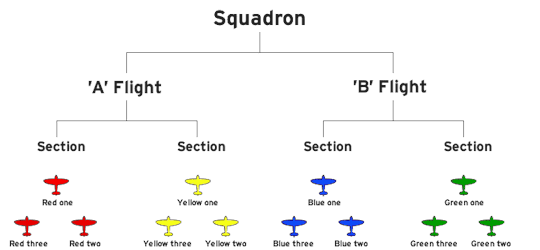
When the battle began, the Luftwaffe were able to operate from airfields in France, enabling their fighters to escort the bombers to Britain. So when the RAF and Luftwaffe met in the skies above Britain and the English Channel, the ineffectiveness of the Fighter Area Attack tactics and Vic formation was soon exposed. As with the required tight formation, only the lead aircraft of every Vic was able to search for enemy aircraft, as the other two aircraft in the Vic had to focus on keeping formation, so an attacking aircraft could catch the formation by surprise, particularly from the rear. Although the tactic was later modified so that the fourth section would fly 1,000ft above and behind the other three sections, whilst weaving, to help minimise the chances of an attack from the rear, casualty rates among these aircraft were high.
Typical RAF squadron formation during flight in the Battle of Britain
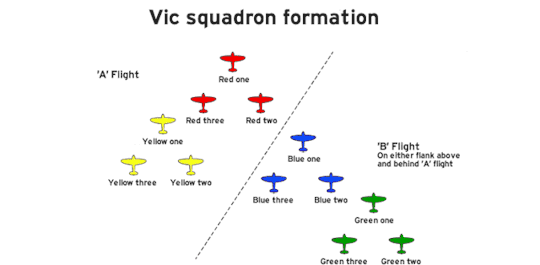
Despite complaints about the Vic formation, no official change was forthcoming, so some squadrons adapted a tactic being used by the Luftwaffe called Schwarm, which was a more flexible tactic. This had been developed after the combat experience of the Luftwaffe's Condor Legion in the Spanish Civil War (1936 – 1939) and would be called Finger-four by the RAF. This involved four aircraft flying in formation, but operating in pairs. This allowed the attacking aircraft to be covered by his wingman with the overall formation spaced at about 200 meters apart and flying at various altitudes. This meant the pilots could focus on looking for enemy aircraft and also protect each other, and if the formation was attacked the two pairs would split up, one going left the other to the right. The Finger-four tactic also meant that the squadron formation changed as it would now be divided into three sections of four as opposed to the Vic formation's four sections of three.
In the aftermath of the battle, Fighter Command modified its tactics in 1941, before, in 1942 the Finger-four formation was officially added to pilot training.
Finger-four squadron formation
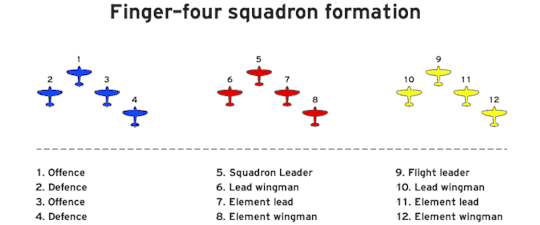
Engaging the Luftwaffe
When an incoming raid had been plotted by Britain's Air Defence System, also known as the 'Dowding System' (see diagram below), squadrons would be scrambled by controllers as and when needed, as opposed to a large formation, allowing an enemy raid to be under constant harassment by the Royal Air Force which also had the effect of breaking up the Luftwaffe formations, however, fighter sweeps by the Luftwaffe were not a priority for Fighter Command.
Dowding System

The opening stages of the battle, during July and early August 1940, saw the Luftwaffe probe the Royal Air Force's defences by attacking shipping in the English Channel and targets along the coast. However, mid-August saw the Luftwaffe change tactics and launch Operation Eagle Attack on the 13th August 1940, known as Eagle Day, this saw the Luftwaffe try to lure the RAF into battle in the air by targeting Fighter Command's infrastructure.
Many tactical instructions were issued during the battle, and this new phase saw the first major tactical changes by Fighter Command when, on the 19th August 1940, Air Vice-Marshal Keith Park, Air Officer Commanding, No. 11 Group, Fighter Command, issued a number of instructions. Among these was for RAF fighters to operate only over land or gliding distance to the coast.
Despatch fighters to engage large enemy formations over land or within gliding distance of the coast. During the next two or three weeks, we cannot afford to lose pilots through forced landings in the sea.
And prioritising German bombers as targets.
Against mass attacks coming inland, despatch a minium number of squadrons to engage enemy fighters. Our main object is to engage enemy bombers.
Seven days later on the 26th August 1940, Air Vice-Marshal Keith Park issued further instructions to help with the interception of German formations, as not all squadrons sent to intercept were doing so. This would require details on the intercepted raid to be detailed over the radio to help controllers vector more squadrons to the correct area.
To enable Group and Sector Controllers to put all squadrons in contact with the enemy formation leaders are to report approximate strength of enemy bombers and fighters, their height, course and approximate position immediately on sighting the enemy.
One of the final major instructions issued by Air Vice-Marshal Keith Park was on the 11th September 1940 that when contact was made with the Luftwaffe formation, the Spitfires should tackle the fighter screen, whilst the Hurricanes concentrated on the bombers and close escort. However, as radar couldn't differentiate between the aircraft in a raid it wasn't always possible for this to happen.
READINESS SQUADRONS: Despatch in pairs to engage first wave of enemy, Spitfires against fighter screen, and Hurricanes against bombers and close escort.
By the time this instruction was issued, the Luftwaffe had again changed tactics and were targeting London and other cities across the UK, in what was to become known as the Blitz.
The Big Wing
The use of multiple squadrons for one large formation wasn't a completely new tactic for Fighter Command, as they had been used during Operation Dynamo (26th May 1940 - 4th June 1940) the evacuation from Dunkirk, France. The issue with these larger formations was if vectored to the wrong position, missing the enemy formation, there may not be any reserve squadrons available to intercept the raid instead. As the battle progressed the idea of large formations of multiple fighter squadrons intercepting enemy raids resurfaced, championed by Air Officer Commanding, No. 12 Group, Fighter Command, Air Vice-Marshal Trafford Leigh-Mallory and Acting Squadron Leader of No. 242 Squadron, Douglas Bader
The idea of the Big Wing was to get three to five squadrons (36 – 60 aircraft) to form together and engage enemy aircraft in numbers. Known as the Duxford Wing, it was used for the first time on the 7th September 1940 and was led by Acting Squadron Leader Bader. Comprised of Nos. 242 and 310 Squadrons, flying Hurricanes from RAF Duxford, and No. 19 Squadron, operating from Duxford's satellite airfield RAF Fowlmere, flying Spitfires, they formed together to protect RAF North Weald whilst its squadrons were in combat. They arrived to late to stop the airfield from being attacked but did engage the Luftwaffe and for the loss of one aircraft, claimed eleven German aircraft. This would be a familiar story, as due to the amount of time it took to get the aircraft into formation, it normally wasn't until after the target had been attacked that the Big Wing would make contact with the attacking aircraft.
One of the successes of the Big Wing was its psychological effect on Luftwaffe aircrews, who were told the Royal Air Force was close to being defeated, to then come up against a formation of up to 60 fighter aircraft.
Big Wing formation
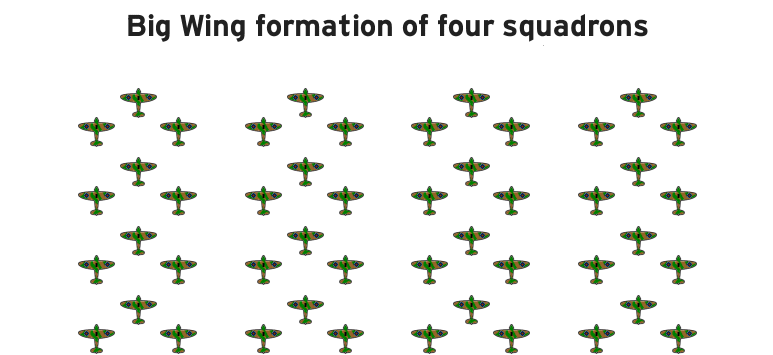
4 notes
·
View notes
Text
Sales and Marketing, University 2nd Year (Level 5)

About the Course: Fast-Track Your Career in Sales and Marketing Are you eager to advance quickly in the fields of sales and marketing? If so, our Undergraduate Level 4 Diploma in Sales and Marketing and Level 5 Diploma in Business Management provide the perfect solution. Together, these diplomas form a comprehensive 240-credit program, allowing students to progress directly to the final year of a related undergraduate degree. Moreover, you have the flexibility to complete your final year either on a UK university campus or via distance learning, depending on your preferences and lifestyle. The Level 4 modules and assignments align with the typical content covered in the first year of a university degree. Meanwhile, the Level 5 components mirror the curriculum of the second year, ensuring you are fully prepared for higher studies. This structured course features 10 Level 4 modules (worth 120 credits) and 10 Level 5 modules (worth 120 credits). Alternatively, if you choose to focus solely on Level 4, you will attain 120 credits. Consequently, you can apply for an exemption from the first year of a relevant university degree program, saving time and tuition fees. Each module includes approximately 40 guided learning hours, providing a robust educational framework. Furthermore, an additional 30–50 hours of optional learning materials such as exercises, readings, and online resources enrich your experience. Therefore, you will have access to ample resources to support independent study and mastery of concepts. Additionally, we are proud to inform you that this course qualifies for ELCAS funding, making it more accessible to eligible learners seeking financial support. Upon successful completion, students can progress to prestigious universities, for instance: University of Gloucestershire Anglia Ruskin University Coventry University In conclusion, enrolling in our Level 4 and Level 5 Sales and Marketing Diplomas will give you an unbeatable head start. With flexible study options, recognized qualifications, and outstanding career pathways, your journey to success starts here. Awarding Body Course Details https://labm.institute/courses/sales-and-marketing-uni-2nd-year-level-5/
0 notes
Text
Evaluation - Playability and Presentation
During development we did some playtesting and recorded feedback via google forms. This feedback, as well as simply observing player actions was fantastic input for improvement. For example with my mirror puzzle I'd noticed players were getting stuck because they had to walk all the way up to the mirrors, and by the time the next round had begun they weren’t back in a position where they could see all the mirrors.
As a result of this, I changed the way the mirrors were interacted with entirely, now having a line trace shot out from the player’s view, and activating a different mirror using a switch node based on the component hit. This allowed the player to interact with the mirrors from a distance. I also changed the timings for the flashes so that the sequence plays faster, but there’s a delay between rounds to allow the player to refresh their mind.
We did some more playtesting near the end of the project for any last minute changes, and there were significantly less troubles with the mirrors. However the following task, involving finding wood to build a bridge, was apparently more difficult than I'd anticipated. People were missing wood pieces that I thought were fairly clear. So to rectify this I added a small sparkle effect around the wooden planks, making them a bit more noticeable without making them absurdly obvious.
We also added a fairy character who guides the player in the right direction and offers dialogue explaining what to do next, as well as things to follow such as a row of lanterns from the monument leading all the way down to the dock, or red buoys along the water to guide the player across the ocean.
I believe our project is ready to be presented at the Game Anglia Festival. Are there things I'd add or change if I had the time? Absolutely! Are these things drastic enough to turn down the opportunity for the game to be shown off? Not at all! I’m proud of what we’ve achieved and I hope anyone who plays it will be left with a positive impression.
0 notes
Text
Golden Dawn
The G.D. was founded by Dr. William Wynn Westcott,Samuel Liddell McGregorMathers, and Dr. A.F.A. Woodward upon an extremely flimsy basis. In 1887, Dr. Westcott acquired an old manuscript, perhaps from a Reverend Woodford. The number of similar names, all beginning with "W," is fruit for a conspiracy theory all on its own. This manuscript contained the outline of a magical ritual. Although commonly referred to as "ancient," the manuscript is in fact on paper hearing an 1809 watermark, and it is possible - though not likely - that it was a fabrication by the founders of the G. D. , written on some old paper.
The manuscript may not have been complete, and the ritual most certainly was not, so Dr. Westcott - a respected London coroner, but also a devotee of ritual and a student of the occult - called on his friend Mathers to flesh it out.
Mathers was well described by Yeats as a man of "much learning but little scholarship, much imagination but imperfect taste." His critical faculties were not well developed, and his enthusiasms were unpredictable, but he studied magic with great eclecticism. He was able to enlarge the "cypher manuscript" it is in a Hermetic cypher of the Middle Ages without difficulty, drawing heavily on the work of Eliphas Levi, who is not highly regarded among scholars.
The cipher manuscript may have been a draft of a secret society ritual by some other pers on, now unknown, or it may have been notes on a ritual that someone had seen or read about, but when Mathers had finished with it, the result was a glorious hodgepodge. For example, where the original manuscript reads, "H. recites prayer of gnomes" "H" being the "hierophant" or priest, Mathers translated the Oraison des Sylphes from Levi's Dogme et Rituel, and inserted that wholesale, instead.
The source of the manuscript may be doubtful, but, on balance, it does not seem to have been a deliberate fabrication by anyone involved with the Golden Dawn; with the accretions that Mathers added, it did not need to be. There is a much more doubtful provenance, though, for the letters Dr. Westcott produced in an attempt to build a history for his new organization. The so-called Sprengel letters were supposed to have come from a German Rosicrucian initiate who chartered the G. D. and legitimated much of its ritual. Ellis Howe, in his Magicians of the Golden Dawn (London, 1972), makes an extremely strong case that the letters were spurious, written by Westcott himself, and this is only the earliest taint on the organization. The arguments against the authenticity of the letters are lengthy, but a telling component is that they all read as if they were written by an English-speaking person whose command of German was imperfect.
Be that as it may, the three chiefs plunged ahead with their new group. Five degrees were mentioned in the cypher manuscript, and four of them bore the same names as the first four grades of the Societas Rosicruciana in Anglia a Masonic derivation on the Rosicrucians, but with different numbers. To satisfy his love of degrees and ritual, Westcott appears to have continued the system, using the next two "orders" of Rosicrucianism and then creating the grade of Ipsissimus from the whole cloth.
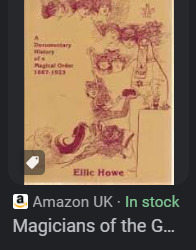
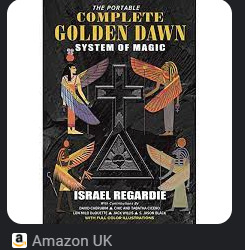
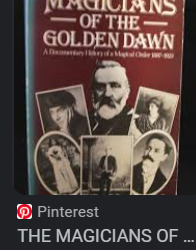
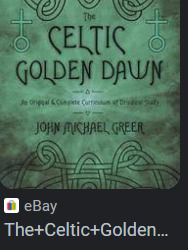
0 notes
Text
Pioneering study signals new era of environmentally-friendly programmable bioelectronics
The miniscule wires are the size of transistors on silicon chips or one thousandth of the breadth of the finest human hair. They are made completely of natural amino acids and heme molecules, found in proteins such as hemoglobin, which transports oxygen in red blood cells. Harmless bacteria were used for their manufacture, eliminating the need for potentially complex and environmentally damaging procedures commonly used in the production of synthetic molecules. Lead author Ross Anderson, Professor of Biological Chemistry at the University of Bristol, said: “While our designs take inspiration from the protein-based electronic circuits necessary for all life on Earth, they are free from much of the complexity and instability that can prevent the exploitation of their natural equivalents on our own terms. We can also build these minute electronic components to order, specifying their properties in a way that is not possible with natural proteins.” Leading experts in biomolecular engineering and simulation worked together to produce this unique new method of designing tailor-made proteins with tuneable electronic properties. The multidisciplinary team used advanced computational tools to design simple building blocks that could be combined into longer, wire-like protein chains for conducting electrons. They were able to visualise the structures of these wires using protein X-ray crystallography and electron cryo-microscopy (cryo-EM), techniques which allow structures to be viewed in the finest detail. Pushing the technical boundaries of cryo-EM, images of the smallest individual protein ever studied were obtained with this technique. Ultimately, these nanoscale designer wires have the potential to be used in a wide range of applications, including biosensors for the diagnosis of diseases and detection of environmental pollutants. It is also hoped this invention will form the foundation of new electrical circuits for creating tailor-made catalysts for green industrial biotechnology and artificial photosynthetic proteins for capturing solar energy. advertisement The breakthrough was possible thanks to a £4.9 million grant from the Biotechnology and Biological Science Research Council (BBSRC), the UK’s largest bioscience funder, which resulted in a five-year project entitled ‘The Circuits of Life’ involving the Universities of Bristol, Portsmouth, East Anglia, and University College London (UCL). The team harnessed their expertise in protein design, electron transfer, biomolecular simulation, structural biology and spectroscopy, gaining insight into how electrons flow through natural biological molecules, a fundamental process which underpins cellular respiration and photosynthesis. Further advances are expected as the project, which began last year, progresses, presenting significant opportunities to help meet the transition to net zero and more sustainable industrial processes. Co-author Adrian Mulholland, Professor of Chemistry at the University of Bristol, said: “These proteins show how protein design is increasingly delivering practically useful tools. They offer exciting possibilities as components for engineering biology and also are great systems for investigating the fundamental mechanisms of biological electron transfer.”
0 notes
Photo

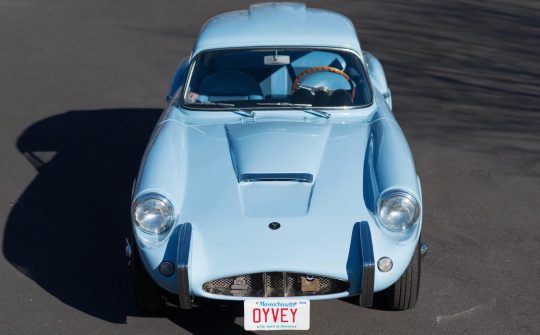

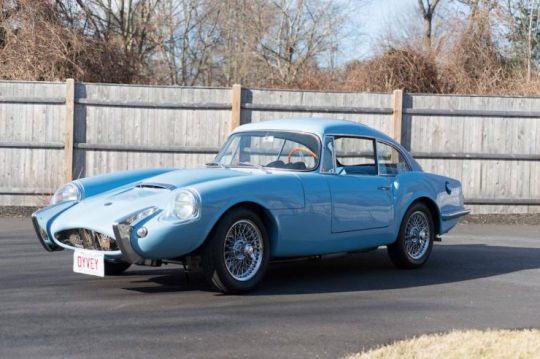
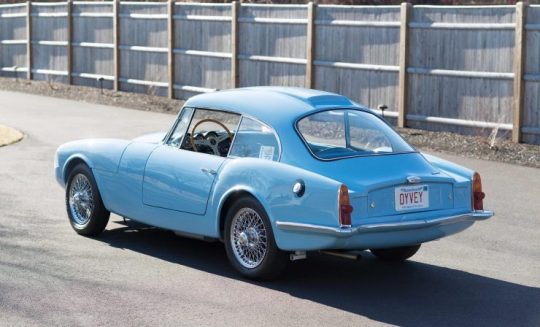

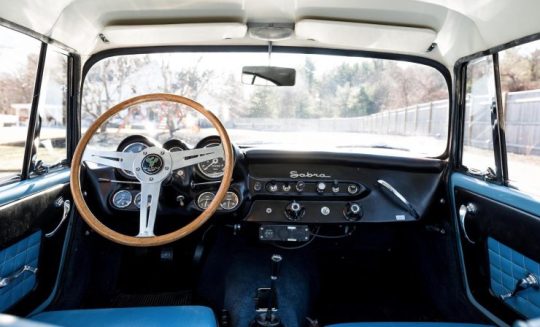
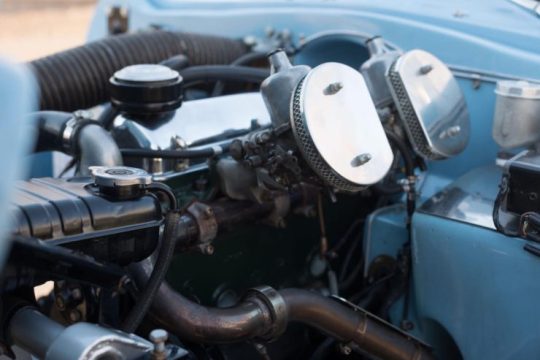
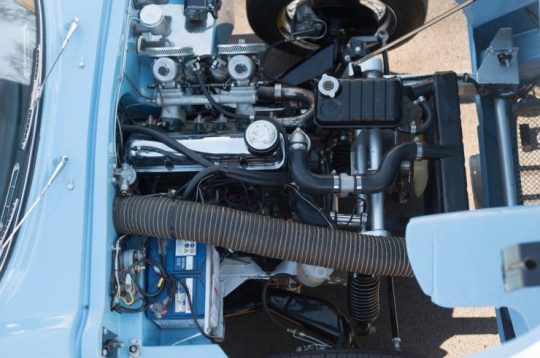
Sabra Sport GT
The Sabra Sport GT built holds the unique distinction of being the only production Israeli sports car ever made, it was built by Autocars Co. Ltd – Israel’s first domestic car manufacturer.
The company was founded in 1957 by Yitzhak Shubinsky to build light trucks and utilitarian cars in Israel, with an eye to exporting them to the lucrative US market to bring much needed foreign currency into the country.
Rather that start from a blank slate Shubinsky decided to buy the rights to the fibreglass bodied Ashley 1172, a chassis developed by Leslie Ballamy, and the British Ford mechanicals from the little Anglia including a 1700cc 4-cylinder engine.
Autocars had previously worked with Reliant in England due to their expertise on fibreglass car body design and construction, and so they chose Reliant to integrate all the the components into a production ready car, and then begin construction while the factory in Israel was finished.
The car you see here is one of the rarer hardtop GT models, most that were built were roadsters. It was built in 1963 and fitted with the Alexander Tuning kit that took power from 61 bhp to a more respectable 90 bhp.
13 notes
·
View notes
Text
Thomas and Friends Headcanons (The Famous Eight)
NWR #1-Thomas Billinton
Basis: LB&SCR E2 w/ extended side tanks
Designer: L.B. Billinton
Buildplace: Brighton, East Sussex, England
Backstory: Thomas was one of the last E2's to be designed. Built on September 1, 1915, he would first work as a station pilot. During this time, he was painted in the LB&SCR's black livery with red lining. His number was #106. He came to Sodor during WW1 due to a shortage of tank engines on the island.
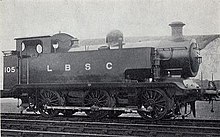
NWR #2-Edward Stewart-Pettigrew
Basis: heavily modified FR K2
Designer: W.F. Pettigrew
Buildplace: Springburn, Glasgow, Scotland
Backstory: Edward was one of the first K2's. Built on July 12, 1896, he would work for 9 years as an express engine near his build site before working in Cumbria until 1915, when he was sent to Sodor. During this time, he was painted in the FR's indian red livery with vermillion and black lining. His number was #37. Like Thomas, he came to Sodor due to a growing need for express engines.

NWR #3-Henry Gresley-Stanier
Basis: LNER A1/C1 hybrid (formerly) LMS Stanier Class 5 "Black 5" (currently)
Designer: Sir Nigel Gresley (old shape) Sir William Stanier (new shape)
Buildplace: Doncaster, South Yorkshire, England (old shape) Crewe, Cheshire, England (new shape)
Backstory: Around April 13, 1919, Henry was built from stolen blueprints of Sir Nigel Gresley by an unknown locomotive builder who held a grudge against Gresley. He hadn't realized that the blueprints were for an experimental locomotive. By the time he did, Henry had already been built. Along with many other problems, he had a small firebox, making him a poor steamer. The builder decided to sell Henry to the first available buyer, which was Sir Topham Hatt I. Due to his desperation for locomotives, Sir Topham Hatt had no choice but to keep Henry. When Henry arrived, he was painted in a special green livery with red stripes and had no number.
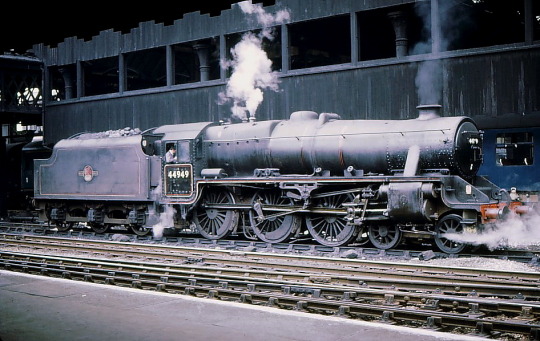
NWR #4-Gordon Gresley
Basis: LNER A1 Pacific
Designer: Sir Nigel Gresley
Buildplace: Doncaster, South Yorkshire, England
Backstory: Gordon was an experimental prototype for the A1 class, nicknamed the A0, built on February 20, 1922. Unlike his brothers and sisters, he was never given a number and only went out for test runs. He was sent to Sodor the next year due to the growing NWR's need for a premier express engine. When he arrived, he was painted in LNER black.

NWR #5-James Hughes
Basis-Modified L&YR Class 28
Designer: George Hughes
Buildplace: Horwich, Greater Manchester, England
Backstory: James was an experimental Class 28 with an extended pony truck and 5 ft 6 in driving wheels. Built on October 3, 1912, he worked for 12 years as a mixed-traffic engine. During this time, he was painted in the L&YR's black livery with red and white lining. His number was 52529. He was sent to Sodor to help with both passengers and freight.

NWR#6 Percival 'Percy' Avonside
Basis-GWR Trojan prototype
Designer: Avonside Engine Company
Buildplace: St. Phillip's, Bristol, England
Backstory: Percy was an experimental prototype of the GWR Trojan. At some point in his life, he received Hunslet components. Built on June 3, 1900, he worked for the GWR for 25 years as a station pilot. During this time, he was painted in the GWR's Middle Chrome Green livery with yellow lining. Soon after, he was put in a workshop, where he was bought by Sir Topham Hatt and sent to Sodor.
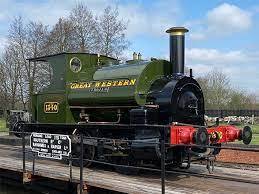
NWR #7-Tobias 'Toby' Holden
Basis- GER Class C53/LNER Class J70
Designer: James Holden
Buildplace: Stratford, London, England
Backstory: Toby was one of the last C53's built. Built on September 15, 1914, he would work at the Wisbech and Upwell Tramway as a mixed-traffic engine. He was numbered 62553. One summer in 1951, Sir Topham Hatt I, along with his wife, Lady Hatt, and grandchildren Bridget, Stephen, and Gerald, went to East Anglia for a holiday, and met Toby on the tramway. They liked him a lot, and the feeling was mutual. Later, when Thomas got in trouble, Sir Topham Hatt remembered Toby and brought him from his old railway after it had closed down. When Toby arrived on Sodor, he was painted in the LNER's brown livery with black sideplates with yellow LNER lettering on them.
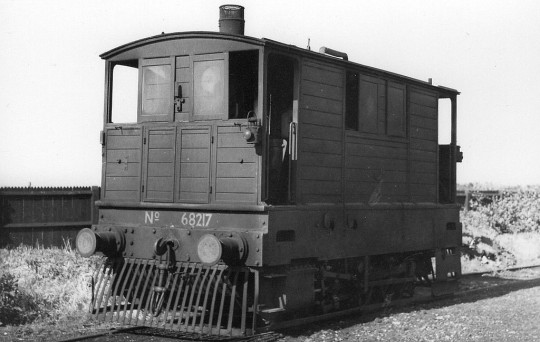
NWR #8-Montague 'Duck' Collett
Basis-GWR 5700 Class
Designer: Charles Collett
Buildplace: Springburn, Glasgow, Scotland
Backstory: Duck was one of the last 5700's built. Built on August 17, 1929, he would work at Paddington as a station pilot. He was numbered 5743. In 1955, Knapford was in need of a new station pilot, so Duck was sent over to Sodor. When he arrived, he was painted in BR black.
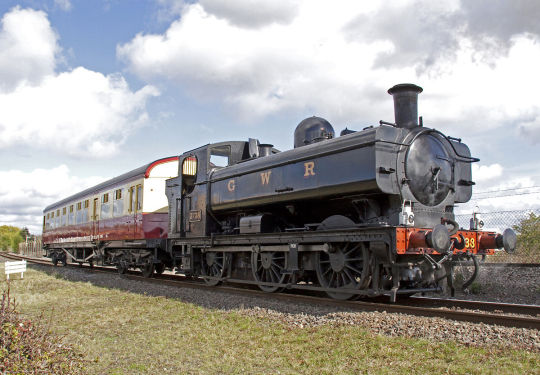
2 notes
·
View notes
Text
#Anglia#ElectronicsDistribution#WinslowAdaptics#SemiconductorSolutions#ICSockets#ObsolescenceManagement#Prototyping#ElectronicsDesign#ComponentEngineering#UKManufacturing#electronicsnews#technologynews
0 notes
Video
Undercarriage leg from Junkers Ju88A-4 [WkNr140099 / 4D+FP] by Alan Wilson Via Flickr: These are parts from a Ju88A-4 of 6.KG 30 based at Varel in Northern Germany. On 14th March 1944 it was one of about 25 aircraft from the airfield to take part in an attack on London as part of the three month long ‘Operation Steinbock’ effectively a mini-blitz on London. Having routed to London via East Anglia, it was planned to return via Beachy Head on the South coast of England, but 4D+FP was shot down by a Mosquito night-fighter and crashed at Backwood in Surrey at 11.05pm with the loss of all crew. The crew were:- Unteroffizier Gerhard Straube – Pilot Unteroffizier Alfred Schiffmann – Observer Unteroffizier Hans Sing – Radio operator and Gefreiter Heinz Wende – Gunner. The Mosquito was NF.XIX ‘MM651’ from 96 Squadron based at West Malling. Its experienced crew was made up of Flight Lieutenant Norman Sidney Head DFC, the pilot, and Flying Officer Arthur Andrews DFC, the navigator. The pair had worked together as a night-fighter crew over a long period and had begun on Defiants in 1943. Both were awarded the DFC. On this night they would also shoot down a second German bomber. MM651 survived the war and was later sold to the Swedish Air Force. The crash site was excavated in June 1992 with some of what was recovered, including an engine, going to the now closed Booker Aircraft Museum. This display includes an undercarriage leg, propeller hub and other smaller components. Wings Museum, Balcombe, West Sussex, UK 20th August 2020
2 notes
·
View notes
Text
E-Business - the biggest opportunity for 2020

What is an E-Business? The term E-business has evolved from the simple abbreviation of “electronic business.” It is a top level term referring to methods of utilising digital information and communication technologies to support or streamline business processes. Our roots in E-Business Our primary E-Business inspiration came at the beginning of our Internet journey at the Live - 95 event in London. Having sat through a number demo’s and speeches from various providers, we realised that the simple concepts of electronic communication and data transfer offered fantastic life efficiency opportunities - not just business. We were already looking at application of collaborative tools such as communication and document management systems - in the form of Internet connected bulletin boards. In 1998 I actually graduated from Anglia University having designed and created a similar system for my dissertation/project entitled - Worldwide Communications. Having dialled in and had a play - the lecturer did not appear to see the relevance to the Automotive Engineering Degree - he said he doubted the collaborative approach to information sharing would be likely to catch-on and he did not perceive any significant benefit. I didn’t argue - but I did forward the 8 page document published in the Wall Street Journal on 7th October 1997, by IBM - they used E-Business as the term to describe how they believed corporate systems would fundamentally change in the digital era. Suffice to say it caught on. As we begin to embrace todays opportunities - the initial strategic thinking back in the 90s is fundamental, as it reminds us of the potential scope of E-Business. They said - E-Business is 'redesigning strategic business processes and meeting the challenges of a new market increasingly characterised by globalisation, and based on new knowledge.’ Luckily they decided against patenting the term in the hope that other companies such as ours would engage with the concept and help to form a new industry.Capitalising on E-Business Solutions Fast forward to 2020 - E-Commerce is a widely used term, however - aligned to our strategic thinking from back in the 90s - whilst it does describe the commercial transactions in buying and selling it is still just one possible E-Business Component. In 2002 we built our first web based application server, designed to provide E-Business services, capitalising on web based solutions - to replace previous paper based equivalents, in an infinitely more efficient way. E-Business Hosting - was born in 2002 with a core service offering, designed to provide advanced, Linux based web hosting services with a focus on the extended functionality provided by server side technologies such as Coldfusion and PHP. The 2002 strategy was designed to enable integration of E-Business solutions into company intranets and public websites which we built for customers. The 2020 strategy enables automated setup of an E-Business service websites, utilising cloud server technology to deploy the latest LAMP (Linux, Apache, MySQL, PHP) Optimised web based server systems. Why - E-Business Hosting? Built on these solid technological foundations, E-Business Hosting not only provides a highly functional web hosting platform at an extremely competitive price. Additionally, every customer is provided with a selection of hundreds of ready made E-Business applications which can be automatically be installed on a website in minutes. For example - a new novice customer can have a Wordpress blog or a Prestashop E-Commerce app running within seconds of signing up. Package Prices start small for small and increase only as customers grow needing more resources.Considering all of the global challenges of 2020 - it is an ideal time to make the move into E-Business.The COVID-19 influence By definition - E-Business solutions are naturally web based or online and hence satisfy all lock-down requirements. So wether you are looking to setup a Blog to engage creatively with the world to pass the time, or would like to enhance office based process to suit a home based work force, or if you simply want to setup a web shop or affiliate marketing site, we not only have a product which will fit your needs, we have the experience to help you select it and set it up. Even if you are not sure what you want to do - but have drive, enthusiasm an a small amount of creativity - we can help point you in the right direction. SIGNUP NOW Read the full article
1 note
·
View note
Text
Accounting and Finance, University 1st and 2nd Year (Level 4 and 5)

About the course Our Level 4 Diploma in Accounting and Finance and Level 5 Diploma in Business Management, collectively totalling 240 credits, offer a direct path to the final year of an affiliated undergraduate degree in accounting and finance. You can complete this degree at a UK university, either on-campus or through distance learning. The Level 4 modules and assignments mirror the content typically covered in the first year of a university degree, while the Level 5 components align with the second year of university studies. This course comprises ten Level 4 modules (120 credits) and ten Level 5 modules (120 credits), each including six written assignments. If you choose to study only at Level 4, you'll earn 120 credits and have the opportunity to seek exemption from the first year of a university degree program. Each module entails approximately 40 guided learning hours, with an optional 30-50 hours of supplementary learning materials. These resources encompass recommended exercises, suggested readings, and internet-based materials to enhance your learning experience. We're pleased to inform you that this course is eligible for ELCAS funding. Examples of University Progression Anglia Ruskin University University of Derby Northampton University Awarding Body Course Details https://labm.institute/courses/accounting-and-finance-1-and-2-yr-lvl-4-5/
0 notes
Photo
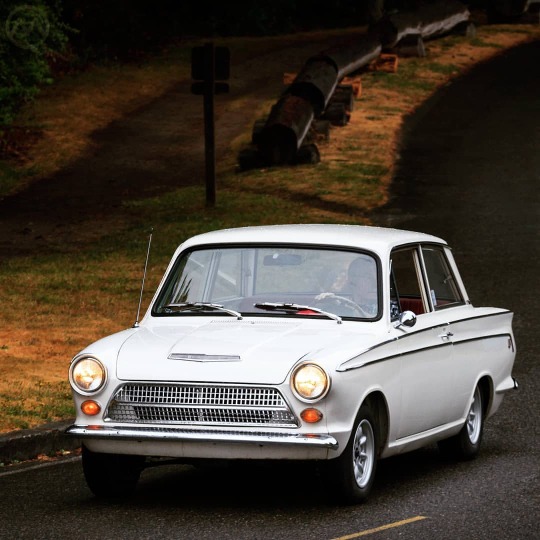
In the 1950s, English Fords had done quite well in the USA, but aside from the Anglia they had been swept aside by the Falcon. But the Falcon didn’t compete directly with the smallest cars (like the Anglia and the VW), and it was a stab at this market which ultimately spawned the landmark Cortina Mk1 - but not in the way you’d think. In 1960, Dearborn and Ford of Germany merged two separate, but similar, small fwd cars into “Project Cardinal” for production in Germany and the USA. When Ford UK’s CEO, Sir Patrick Hennessy, discovered that, he decided to build a rival for Dagenham. “Project Archbishop” became the Cortina Mk1. Detroit ultimately bailed on Cologne and “Cardinal” became the Taunus P4. - “Cardinal” had annoyed Hennessy, who’d been left out - and he was determined to build something that was better and cheaper. In 1959-60, the appeal of front-drive was strong thanks to BMC’s Mini - but Dagenham costed out the Mini and “Cardinal” and decided to make the best use of a conventional car instead. “Archbishop” would also need to be better than the delayed (and less than successful Consul 109E. A year behind “Cardinal,” Hennessy had his team pour on the speed - the Cortina was developed in just 20 months. The style side was led by American Roy Brown, banished to Dagenham for having styled the 1958-59 Edsels. Don Ward and Dennis Roberts, mathematicians as much as body designers, created the rigid unibody. It was similar in size to the 109E but 300 lbs. lighter. To keep costs down, mechanical pieces were developed from other Ford components - Macpherson struts as seen on earlier cars out front, Anglia-derived “Kent” fours under the hood. - Originally the “Consul Cortina,” it went on sale in September 1962 and became one of Dagenham’s most successful (and profitable) cars. Aside from the treasured Lotus version, the most desirable Mk1 was the GT, launched the following spring with a 1498-cc 78 hp “Kent.” This engine made for a sporty drive matched with the Cortina’s 2200-lb. weight. In the USA Mk1 Cortinas sold at a glacial pace, but the GT was available as a 4- or 2-door in 1964, but U.S. customers preferred the 2-door (the only GT offered in ‘65-’66). https://www.instagram.com/p/B5gJyYTlMoO/?igshid=1b52uh9th0fxi
5 notes
·
View notes
Text
Get a New House Constructed by Hopkins
Suffolk and Norfolk are burgeoning areas with a variety of modern and conventional residences. Whether seeking one tale or family houses, these areas continuously draw in property buyers from all over the UK. With the property market increasing, even more residences are being developed to promote the requirements of families and busy specialists. The East Anglia location is likewise a haven for Hopkins Residences, which focuses on brand-new builds with real character and individual design. Hopkins Residences are designed to properly match the décor of its surrounding areas and sub-division. From Suffolk and Norfolk to Cambridgeshire and Essex, and Cambridgeshire, they have put up a myriad of upscale residences that catch the attraction and essence of real innovation,houses for sale suffolk.
The Hopkins Experience If seeking brand-new construct in East Anglia, Hopkins Residences will fulfill your requirements within time and spending plan. For many years, this respectable company has actually developed cutting edge residences that are environmentally appears. These houses likewise involve energy-efficient and eco-friendly choices. With extravagant exteriors and elegant yet practical insides, these one-of-a-kind devices showcase a variety of modern services. Whether aiming to build a house from the ground up or existing facilities, Hopkins Residences are devoted to quality across the board. This indicates they go that extra mile to fulfill or surpass your expectations. From conventional British design the homes of the most recent in streamlined and centralized choices, Hopkins has the tools and experience to attain your preferred results.
. The Refine The house building process is never ever an very easy accomplishment. From finding the right cost-effective contents to parts, it can really be a intense process for brand-new homeowners. With years of substantial market experience, Hopkins Residences really comprehends your worries. Therefore, they simplify the process for brand-new homeowners without losing sight or value. All brand-new owners are ensured professional services from start to finish. This includes the right contents that fulfill your requirements, together with market leading contractors with an eye for information. No house building task is ever before as well big or little, and they are totally licensed and insured to take on house builds of all sizes. Environment-friendly Options Environmentally eco-friendly devices are associated with price and power performance. Whether you desire solar panels, metal vents, or even glowing obstacles, Hopkins Residences can easily promote your demands. They likewise make use of the highest grade of contents to make certain ideal designs and capability. Hopkins likewise networks with local contractors to make certain the right parts and components for your house. With the Hopkins touch, your house is ensured to improve any type of neighborhood or act restricted area. As East Anglia continuouslies expands, Hopkins is a name you can rely on for all your house building and buying requirements. To find out more, merely see their site or call them today. Hopkins will really turn your house constructing desires right into facts.
1 note
·
View note